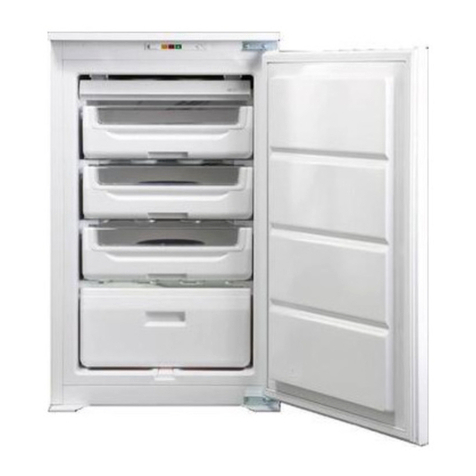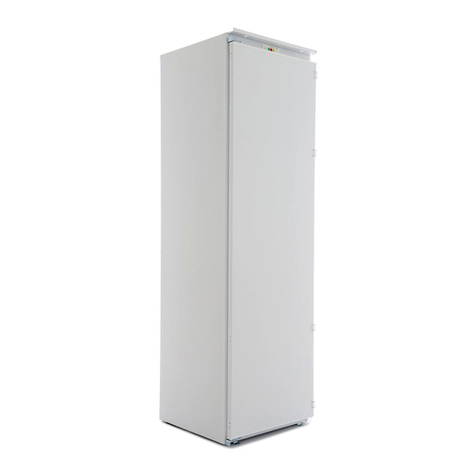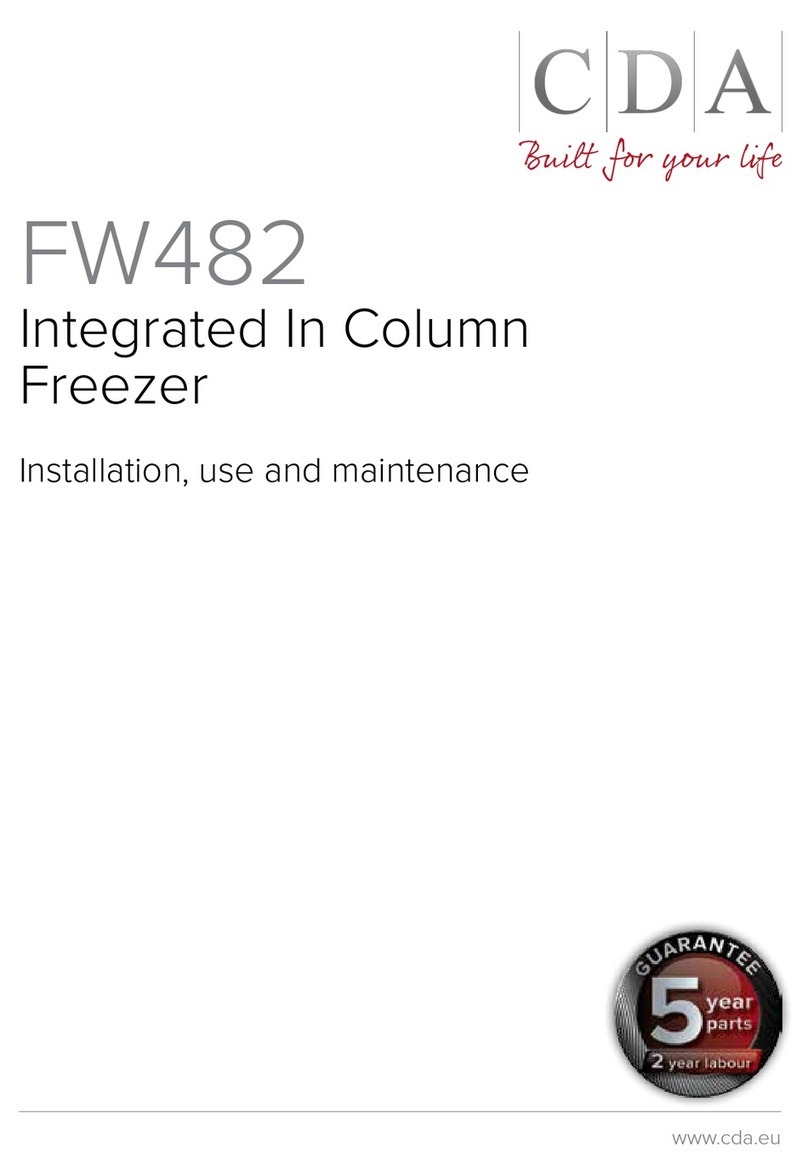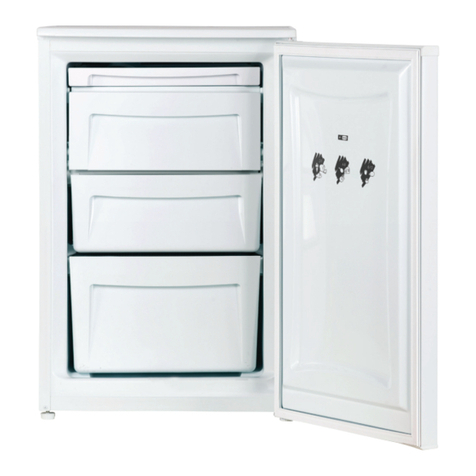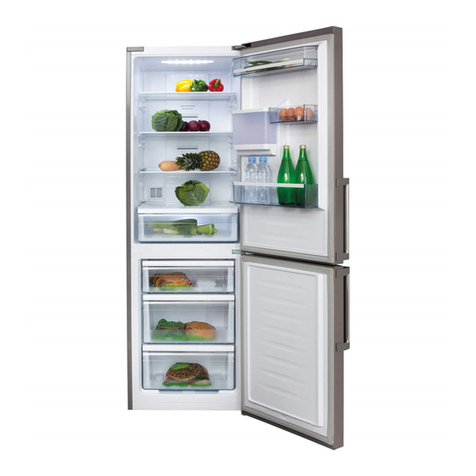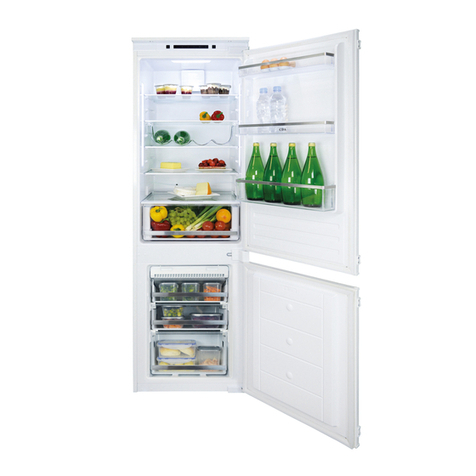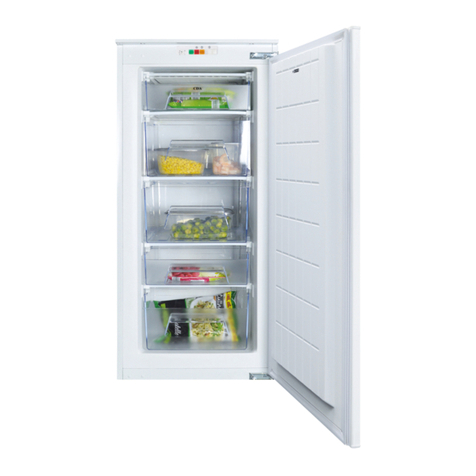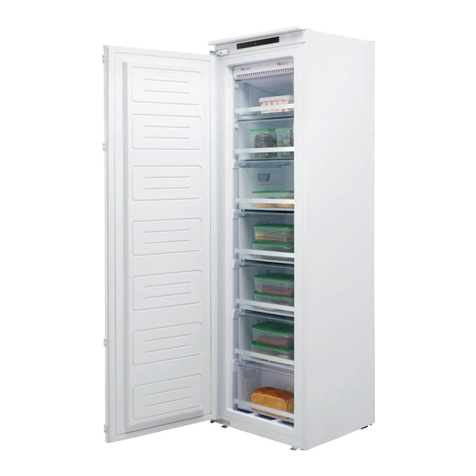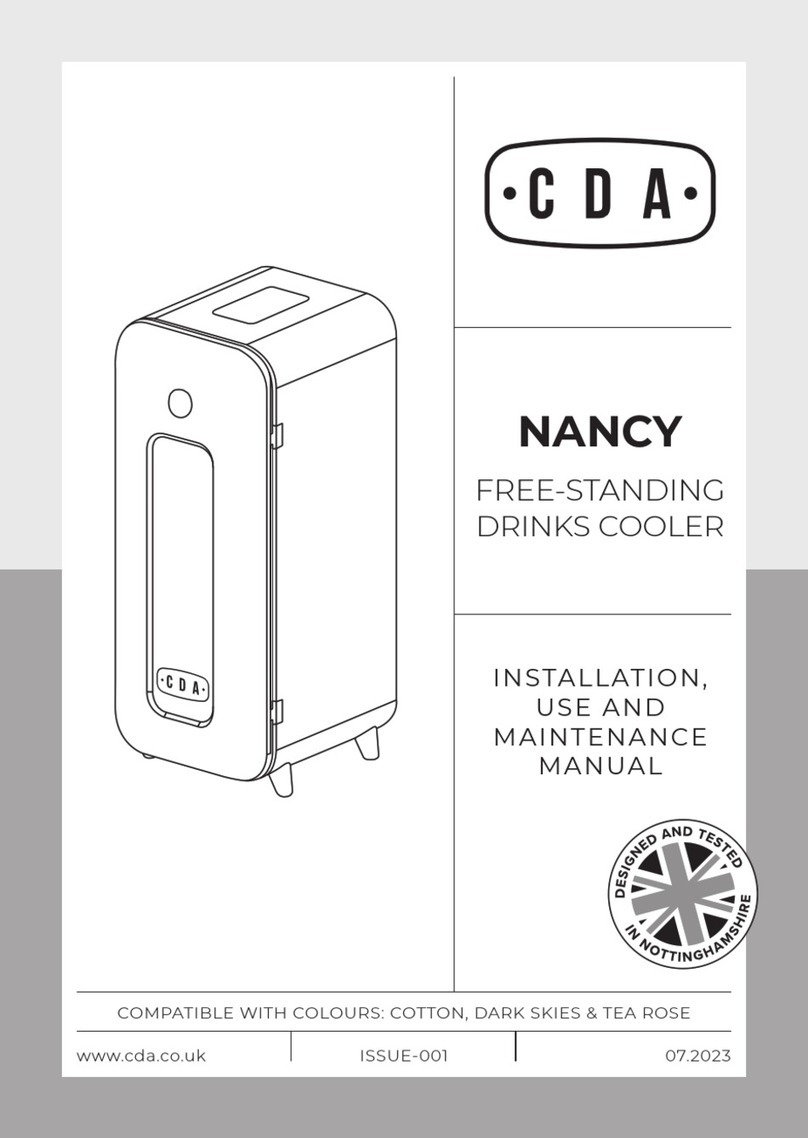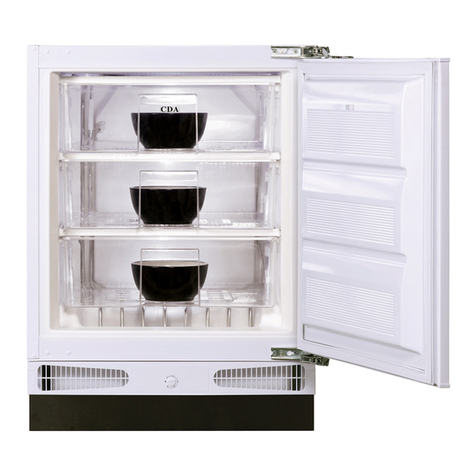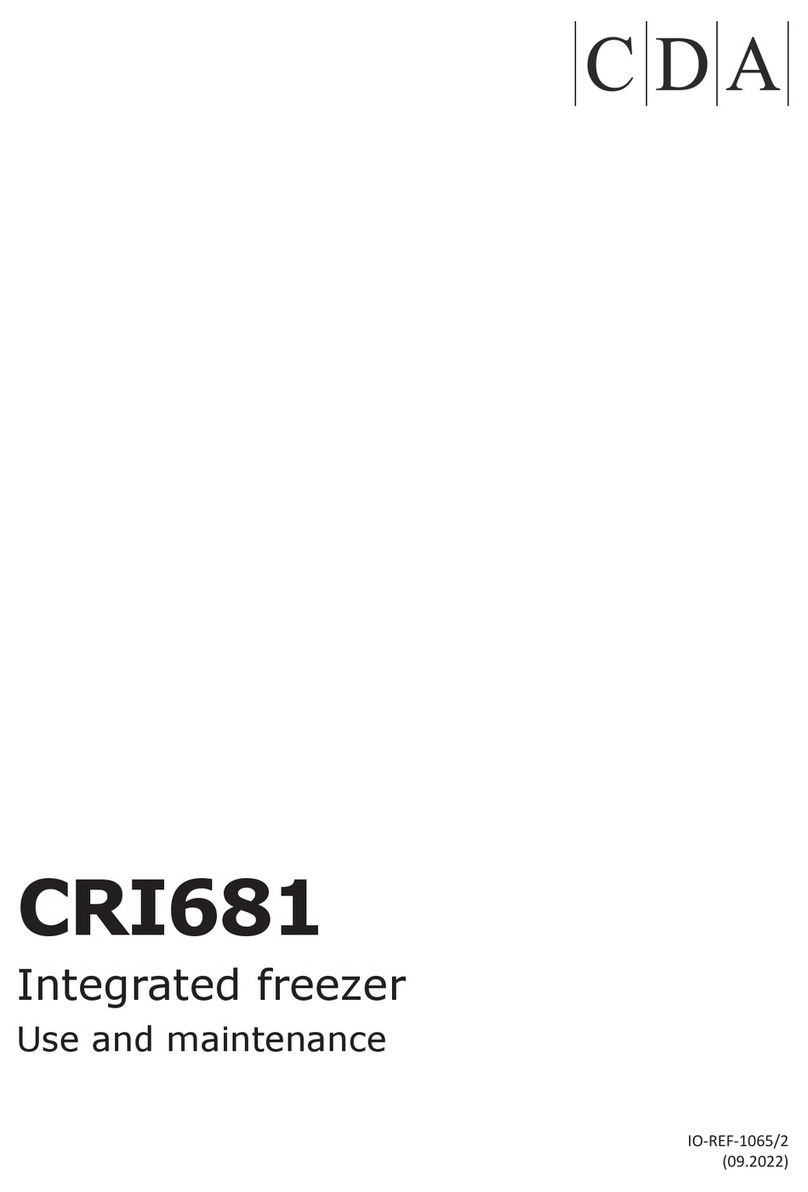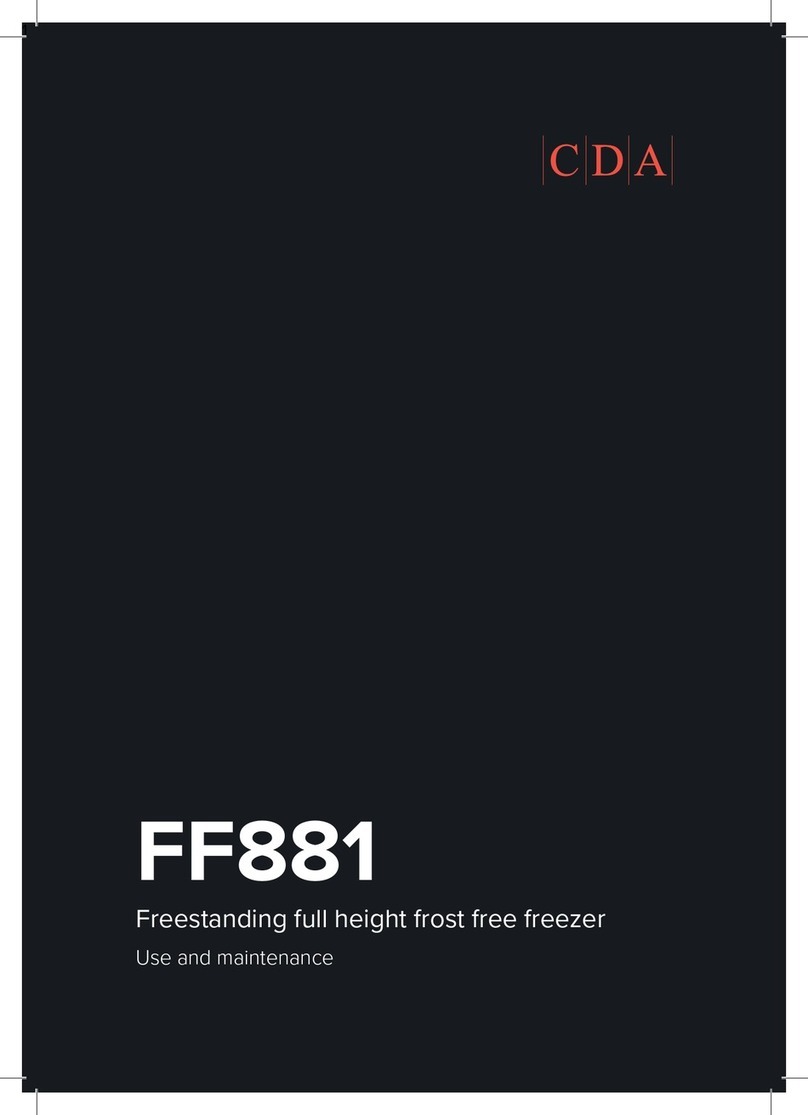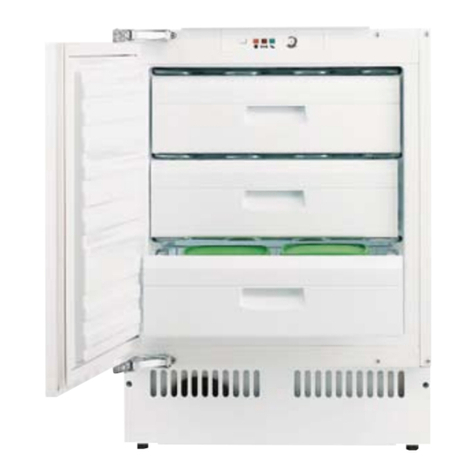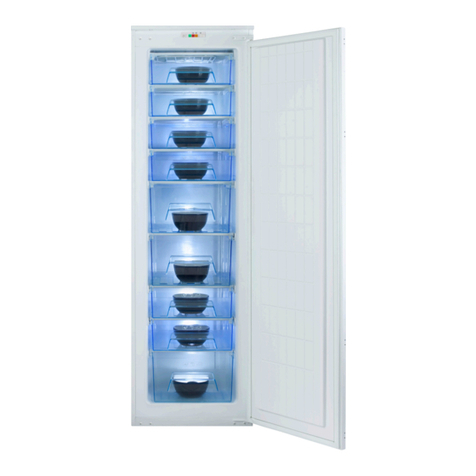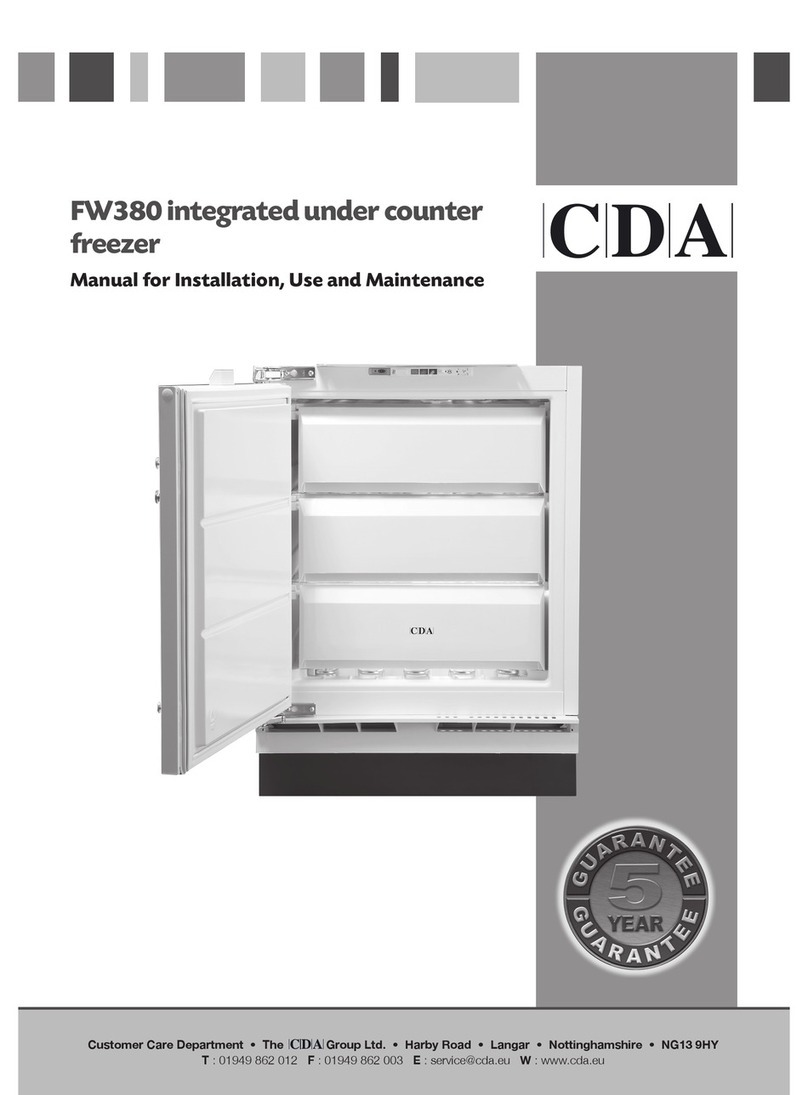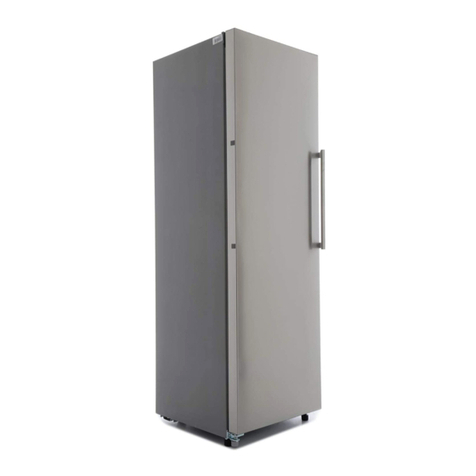
7
• Sort foods prior to storing. Any foods to be used soon should be
stored at the front of the shelf to prevent deterioration caused by
the door being open for prolonged periods.
•Do not overfill the fridge. There should be sucient space
between the foods to allow the cool air to circulate.
•Thawing frozen foods in the fridge compartment will help to keep
the temperature low and save energy.
•Never store raw meats on shelves above cooked meats or other
produce. This will help to prevent juices from raw meat contaminating
other foodstus.
Freezer use
•The freezer compartments are designed to store only frozen food.
•Never put hot or warm foods in the freezer, allow them to cool fully
before putting them into the freezer.
• Follow the instructions on the food packaging for storage of frozen
food. If no information is provided, foods should not be stored for
more than three months after the purchase date.
•Store food in small packages (ideally less than 1kg). This reduces
the freezing time and improves the quality of the food after
thawing.
•Wrap food before putting into the freezer. To stop the wrapping
sticking together, ensure it is dry.
• Label the food before freezing with information including type of
food and dates of storage and expiry.
•Once food is thawed, it must not be refrozen. Only defrost as
much food as is required to prevent wastage.
